QUARTZ-VOLOSATYK
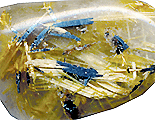
 Characteristics of the mineral.
Characteristics of the mineral.
Among the various varieties of conventional silica, minerals experts especially highlight transparent quartz crystals with fine-fibrous inclusions resembling hairs or thinnest needles. This is the so-called rutile quartz. Quartz (crystalline silicon oxide) with fine crystalline inclusions of other colored minerals (usually golden and / or black).
Mineral rutile provides lovely golden inclusions and forms almost the most expensive stone from the family of quartz (rutile, located by a star, also increases the value of ruby). Rutile (titanium oxide TiO2) occurs in the form of prismatic, columnar, acicular and hairy crystals with simple forms. Characteristic are cranked twins, tees, mesh splices of twins of needle rutile (sagenites). Crystals are often curved. The thickness of such crystals varies from a millimeter to a tenth of a millimeter, and the color may appear golden, silvery or even greenish. Small and coarse-grained solid masses are distributed, where rutile is associated with quartz. Beautiful samples of this mineral are found in Australia, Brazil, Madagascar, Norway, USA, Pakistan and Kazakhstan.
Tourmaline (black sorrel) and other minerals give direct crystals-rods of different thicknesses of black and other colors. With appropriate cutting or processing with a cabachon, these stones with the play of light are magnificent jewelry rarities.
Magic properties of stones.
Rutile quartz was known to people many thousands of years ago. It is believed that the inclusion of rutile increases the magical properties of quartz. Direct needle-like inclusions irrespective of color are called Amur arrows, and curved and intertwined inclusions are called Venus hair. According to another interpretation, the Cupid's arrows are black inclusions, and the hair of Venus is golden. There is one more opinion that the Cupid's arrows are thick, and the hair of Venus is thin crystals. There is no single interpretation. It is considered the most powerful privorotnym means (as a gift). Enhance beauty, attractiveness, sexual energy. It awakens the imagination and inspiration of creative people. Hairy helps in personal matters, with him always accompanied by wealth and success. Protects from magic. Arrows of the Cupid stimulate carnal passion, and the hair of Venus - more sublime spiritual love. It is believed that rings and pendants with rutile quartz slow the aging process. Rutile quartz drives away melancholy, sadness of loneliness, gives its owner the gift of foresight and allows to predict the future. Muslims consider quartz-hairy women with black direct crystalline inclusions sacred stones, calling them the beard of Mohammed. In the East, this stone was considered the most precious and was called the Philosopher's Stone of the East.
According to legend, the goddess of love Venus, bathing in a mountain spring, lost a strand of her wonderful golden hair. Discovering the loss, returned to pick them up, but since the time on Olympus flows much slower than the earth (several months passed there, and on the Earth for months), winter came and the water froze with her hair. At first, Venus was very upset. But the hair in the frozen water looked so beautiful that the goddess decided not to take the strand, but that no one could encroach on the divine curls, turned the ice into a transparent stone (in Greek, the crystal is ice). And since then people find the outlandish crystal, which stores the hair of Venus.


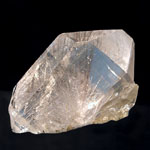
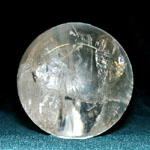


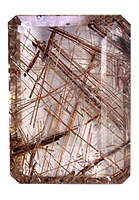


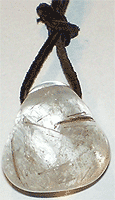
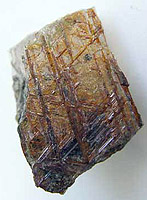
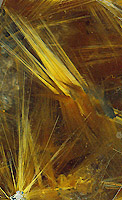
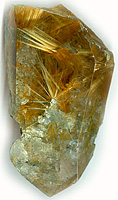

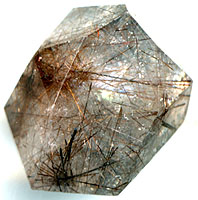
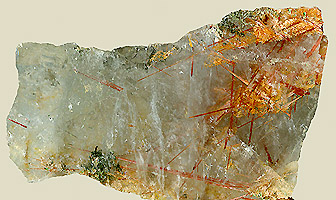
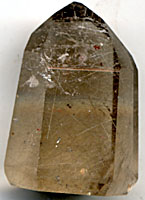
Poisonous and radioactive dangerous stones and minerals
** - poisonous stones and minerals (mandatory check in the chemical laboratory + explicit indication of toxicity).
** - radioactive stones and minerals (mandatory check on the standard dosimeter + ban on open sales in the case of radioactivity over 24 milli / g / h + additional measures of population protection).
All rare stones are subject to mandatory inspection at the standard dosimeter for the permissible level of radiation and in the chemical laboratory for the absence of poisonous and evaporating components that are dangerous to humans and the environment.


Comments
Commenting on, remember that the content and tone of your message can hurt the feelings of real people, show respect and tolerance to your interlocutors even if you do not share their opinion, your behavior in the conditions of freedom of expression and anonymity provided by the Internet, changes Not only virtual, but also the real world. All comments are hidden from the index, spam is controlled.